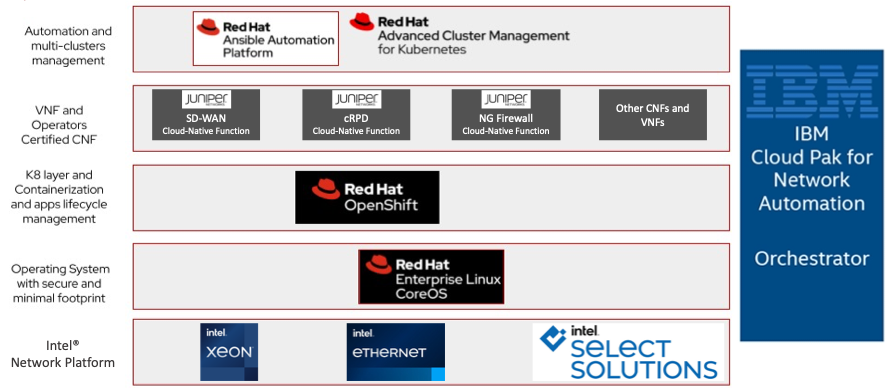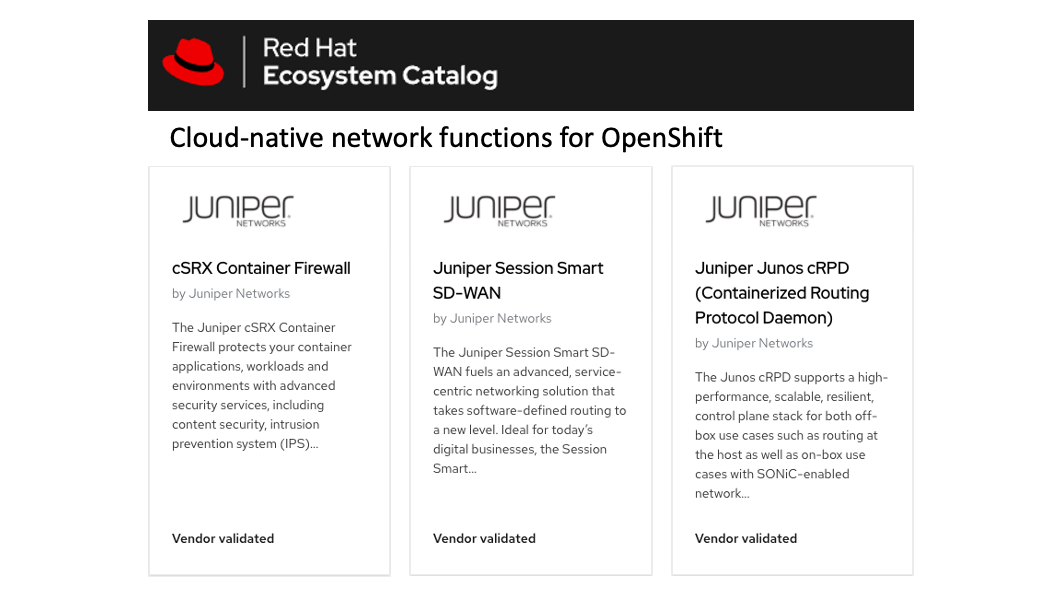Thanks to 5G, multiple use cases and applications for Enterprise Edge Cloud are emerging for different industry verticals. Some enterprises are looking to improve the latency for their real-time applications such as VR/AR, while others want to lower the dependency of the WAN connectivity and some simply need the data to remain local for privacy reasons. And everyone wants the simplicity provided by cloud-based applications. All those requirements point to an Edge Cloud solution that extends cloud capabilities to the edge of the network or the enterprise premise.
Challenges Facing Enterprises Today
Increasing numbers of enterprises today are recognizing that consolidating computing workloads—including operational technology (OT), communications technology (CT), and information technology (IT)—can offer many benefits, particularly when cloud-native services are integrated into their infrastructure. The key business considerations when weighing the value of distributed cloud services include:
- Gaining easy access to cloud-based services
- Improving business agility cost-effectively by converging OT, CT and IT
- Unifying cloud operations in a secure, visible manner, employing the latest uCPE (universal customer premises equipment) technologies for communicating with multiple clouds and among branch offices
- Lowering latency and increasing the availability of cloud-based solutions at the network edge
Building an Edge Cloud architecture is a heavy lift for most enterprises and service providers since it involves selecting the compute and storage and the integration of multiple network functions and applications to deliver the services.
Reimagining the Enterprise Edge Using Cloud-Native Technology
The vision of delivering commercial-grade, cloud-native CPE edge services for enterprises has been realized with a landmark solution release. Co-engineered by a collaborative team from IBM, Intel, Juniper Networks, Red Hat and other partners—this open standards Enterprise Edge solution supports cloud-native container network functions (CNFs) and virtual network functions (VNFs). Hosted on a Red Hat OpenShift Container Platform Plus and orchestrated by IBM Cloud Pak for Network Automation, the solution runs on Intel architecture-based hardware.
To complete the network services platform, Juniper delivers multiple components to enhance the routing and security capabilities. Juniper provides cloud-native network functions running from containers on OpenShift, providing firewall, routing, SD-WAN functionality, among other services. Figure 1 offers a simplified view of the solution components.

Resolving Business Challenges at the Edge
The Enterprise Edge solution addresses these challenges:
- Access: The tested and validated hardware and software components provide a streamlined approach for developing and implementing a cloud-native infrastructure on-premise. Providing connectivity to the Enterprise Edge solution is critical and Juniper provides an advance cloud-native router or an SD-WAN for seamless connectivity for enterprises communicating with branch offices anywhere in the world in a manageable, secure, easy-to-deploy framework. The Kubernetes-based environment runs on Red Hat Cluster Manager, allocating compute, networking and storage resources while balancing workloads, giving enterprise customers flexible, extensible access to cloud-based services. IBM Cloud Satellite extends IBM Cloud services on the enterprise edge with Red Hat OpenShift Kubernetes Service (ROKS).
- Agility: The container platform—Red Hat OpenShift Container Platform Plus—represents the first cloud-native solution for handling virtualized and containerized uCPE processes. This platform lets enterprise customers quickly deploy applications and microservices in on-premise branch offices and apply automation, advanced provisioning features guided by AI, and software lifecycle management to support business practices and policies. IBM Cloud Pak for Network Automation contributes to the solution, providing enterprises with AI-driven automated network operations and a platform for rapidly developing and deploying new services at the edge. IBM Cloud Satellite provides consistent dev tools to improve development velocity across public cloud and edge application deployments.
- Reduced personnel training needs: The Enterprise Edge solution dramatically reduces the need for specialized, trained personnel to perform maintenance, updates and configuration tasks. The solution’s centralized control model provides policy-driven automation and can be combined with AI tools to intelligently manage many network edge processes. IBM Cloud Satellite is an IBM-managed cloud services solution providing a single pane of glass management for workloads across distributed cloud, SRE management of cloud services and rules-based configuration and delivery of Kubernetes resources.
- Lower CapEx and OpEx: The OpenShift container platform makes it possible to run diverse applications across a shared kernel, supporting the consolidation of CT, OT and IT operations on a single server. Using containers for enterprise operations results in much smaller footprint and lower energy use than full-function virtual machines. Development and management of VMs can be complex. By design, each VM contains a separate image of the operating system and has a storage footprint that typically ranges up to several gigabytes. Portability of applications across hybrid clouds or edge computing installation is very limited. In comparison, containers have excellent portability across on-premise and cloud environments, providing a smaller footprint typically in the megabyte range, simpler management than VMs, a built-in method for efficient software updates including patches and fast application startup times. IBM Cloud Satellite Infrastructure services provide on-premise dedicated cloud Infrastructure as a Service (IaaS) with monthly OpEx consumption and flexible sizing with no long-term infrastructure commitments. These factors contribute to lower CapEx and OpEx values for the enterprise.
- Optimized platform and efficiency: Containers have emerged as the de facto microservices format for cloud-native environments. Besides the agility, containers also provide better performance and a smaller footprint—a few hundred megabytes versus the gigabytes required by virtual machines, ensuring better resource management. Juniper Session Smart™ SD-WAN provides continuous connectivity without requiring expensive hot-standby tunnels, eliminates the inherent inefficiencies and cost constraints of conventional networking products and legacy SD-WAN solutions, reducing bandwidth consumption by >30% and CPU usage compared to alternative networking platforms.
- Reliance on standards-based components: Intel® Network Platform is the technology foundation for this solution that reduces development complexity, accelerates time to market and helps to ensure customers and partners can take advantage of the latest features in Intel hardware, from core to access to edge. This foundation forms the basis of Intel Select Solutions and includes system-level reference architectures, drivers and software building blocks that enable rapid development and delivery of Intel powered network solutions offering an easier, faster path to develop and optimize network and edge computing. Architecture support for Intel® Smart Edge Open gives developers a multi-access edge computing (MEC) software toolkit for enhancing service capabilities and optimizing performance for a wide variety of enterprise and IoT use cases.
- The Red Hat OpenShift Container Platform extends the flexibility and interoperability of an open, standards-based infrastructure to a wide range of cloud-native use cases, providing automation and advanced management capabilities to enterprises operating at the edge.
- High-availability and security: The available cloud-native network functions from Juniper, encompassing container firewall and smart SD-WAN capabilities, deliver strong security and ensure high-availability using multiple external connectivity options.
The primary hardware/software foundation for the solution—based on a reference architecture developed by Intel, IBM and Red Hat—is enhanced and extended by multivendor contributions including Juniper components.
Juniper Components

The Juniper components supported with Red Hat OpenShift can be found on the Red Hat Ecosystem Catalog.
The Juniper cSRX Container Firewall protects containerized applications and environments with advanced security services, including content security and intrusion prevention system (IPS). Purpose-built for containers, the cSRX next-generation firewall can be spun up or down in less than a second for the agility needed to manage transitory container environments.
Juniper Session Smart SD-WAN is a state-of-the art, service-centric networking solution that eliminates the inherent inefficiencies and cost constraints of traditional WAN products and legacy SD-WAN solutions. The fully software-based solution provides agile, secure, and reliable WAN connectivity with breakthrough economics and simplicity.
The Junos containerized routing protocol daemon (cRPD) offers deployment-hardened, feature-rich routing functionality in a container for cloud-native deployments. Decoupling the control plane from the data plane offers platform flexibility, simplicity, automation, elastic scalability and operational efficiency, delivering a true “One Junos”. By packaging Juniper Networks® Junos operating system applications and their related routing stacks as a Docker container, Juniper extends traditional disaggregation by creating a flexible consumption model for network applications that can be easily scaled out. Service providers, cloud operators and enterprises can deploy Junos cRPD in their existing server-based environments to address their unique requirements, in use-cases such as host-based routing, egress peer engineering and route reflector.
Conclusion
This unique, groundbreaking Enterprise Edge solution establishes a standards-based framework for bringing cloud-native uCPE edge services to enterprises. The solution provides the equivalent of a cloud for network services that can operate on-premise. Telcos’ enterprise customers with widespread branch locations, stand to gain a reliable, cost-effective means for deploying network functions with the lightweight portability of the Red Hat OpenShift container platform and the orchestration software provided by IBM. VNFs and CNFs from Juniper combine cloud-native services with container support for business agility and security. The Intel architecture-based infrastructure can provide the level of processing needed for diverse applications at the edge, from compact, energy-efficient Intel Atom processors to the Intel Xeon D processor family for heavy workloads to the high-performance Intel Xeon Scalable processor family for AI and analytics.

























